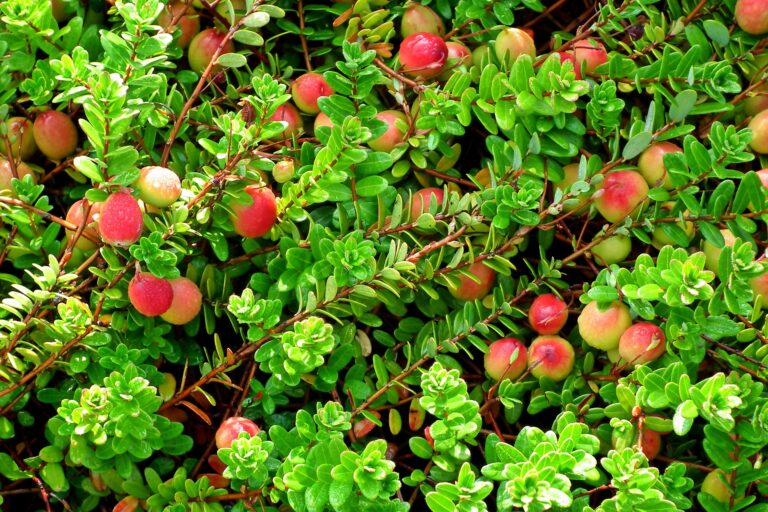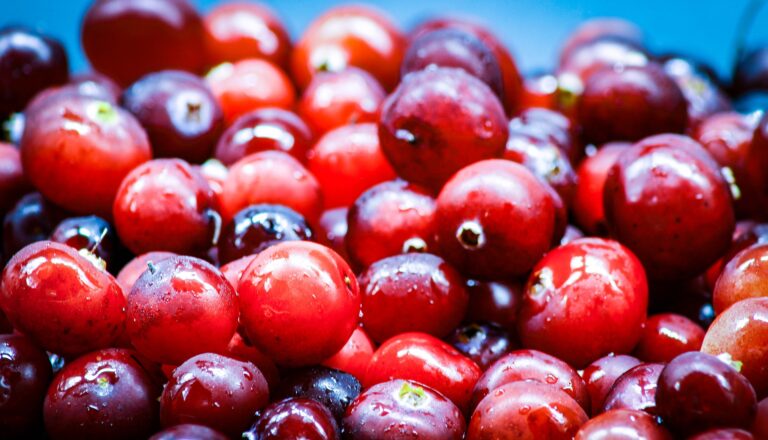One man's dream to make cranberries trendy


It’s always been a mystery to me why cranberry sauce appears on the Thanksgiving table year after year.
Does anyone even put that jellied mass onto their plate? And who keeps bringing it?
It doesn’t matter if it’s homemade or from the can, that gelled sauce isn’t taking up any of the limited space on my plate.
As you can tell, I’m not a big fan. But, I was curious how jellied cranberries came about. I mean, who thought it would be a good idea to smush hundreds of cranberries into a can so tightly that it releases as a log?
But, as it turns out, the history of this jiggly sauce is a bit of a heart warming story. Perfect for a time when we are all gathering to give thanks.
The origin of cranberries


It was Native Americans who first relied on cranberries as a source of food. The berries are one of only a handful of fruits that are native to North America and would lend some diversity to their diet.
The natives used the fruit as an integral part of pemmican — a traveling food that was a mixture of dried fruit, dried meat and fat. I like to think of pemmican as the ancestor to modern-day trail mix.
It wasn’t until the 18th century that cranberries were taken seriously as a crop that could be cultivated and sold for a profit. The late adoption of cultivating cranberries was likely due to the vines being quite particular about where they’ll grow.
Cranberries grow best in natural wetlands since they require so much water. This doesn’t mean they grow in water as many Ocean Spray commercials have made people believe. The bog is only flooded to make harvesting easier since the berries contain air pockets and rise to the top.
Cranberries are also picky about what temperature they grow at. The plant needs a dormancy period in winter, which restricts the farms to northern states. This explains how Wisconsin and Massachusetts have become the first and second largest producers of cranberries.
Even once farmers better understood the demands of cultivating cranberries, the industry remained small, stagnant, and lacking in technological advancement.
That was before Marcus Urann entered the scene.
The cranberry man
If you were predicting who would save the cranberry industry, Urann seems like an unlikely choice.
He had already built a successful life as a lawyer. The most he had in common with cranberries was that he was native to Maine, which is another state known for their cranberry bogs.
It still remains a bit of a mystery why he quit his ritzy job to start a cranberry farm, but when a newspaper asked Urann about his motivations, he gave a very Thanksgiving-esque response:
“I felt I could do something for New England. You know, everything in life is what you do for others.”
It’s not like the cranberry farming was a sexy industry at the time. It was far from thriving.
In fact, it was Urann who transformed the small, mostly family farm industry into a juggernaut.
He believed the limited shelf life of fresh cranberries was pitting farmers against each other. Those who didn’t quickly harvest and sell would end up with a leftover crop that spoiled.
And as more cranberries flooded the market, the prices would nose dive hurting everyone.
Lucky for us, Urann had a plan.
Beyond fresh cranberries


According to Urann, the main problem with the cranberry industry was that fresh cranberries were only available for about six weeks somewhere between mid-September and mid-November. This meant every cranberry grower relied on the same short time period to make their entire livelihood.
Urann was frustrated by the short season of selling fresh cranberries. He knew if cranberries were to make it big, they had to be available year round. Which meant the fresh fruit had to be converted into a product that wouldn’t spoil so quickly.
Experimentation began with cranberry juices and in 1933 Urann launched his first cranberry juice cocktail. The drink is referred to as a “cocktail” since it was a mixture of various fruit juices. Nothing to do with alcohol.
Although, Urann did dabble with ingredients for alcoholic beverages and in 1939 released a cranberry syrup that was meant to be combined with mixed drinks.
His crowning achievement, jellied cranberry sauce, or what you might know as that log of cranberry sauce placed on the Thanksgiving spread, was not invented until 1941.
This was an ingenious use of canning to preserve the cranberries far past November. The heat treatment associated with canning ends up preserving the food for months and months.
Although jellied cranberry sauce is mostly consumed around Thanksgiving, probably due to cranberries historically being eaten in Fall, this was a huge breakthrough. Now cranberries sat alongside other canned fruits and vegetables in grocery stores throughout the entire year.
Urann had singlehandedly skyrocketed cranberry consumption with his innovations.
How is jellied cranberry sauce made?


Urann’s recipe for cranberry sauce was incredibly simple:
- Cranberries
- Sugar
- Water
Nowadays, the sugar is added as corn syrup and high fructose corn syrup, which is an easy way to save money. During Urann’s time, sugar would have been added as sucrose aka table sugar.
Even the processing is relatively straightforward.
The cranberries and water are heated in a kettle. The high temperature will burst the cranberries open. The kettle continues to be heated and mixed until a puree is formed.
The puree is sieved to remove any large particles and sent to a second kettle where the corn syrup is added. The sauce is heated up to boiling temperatures, which eliminates spoilage microorganisms and deactivates enzymes. This ensures a long shelf life.
Cans are then filled with the sauce, sealed with a lid, and plunged into cold water.
Even though this process is pretty simple, there still seems to be one detail missing?
How did Urann manage to get the fruit to form a jelly?
Why do cranberries gel?


The secret to that wiggling and jiggling texture of jellied cranberry sauce is pectin, which is naturally found in cranberries. Pectin is a key part of the fruit’s cell wall and gives it structural integrity and strength.
In fact, the softening of fruits as they age is related to pectin breaking down.
If you make your own jams and jellies you might be familiar with pectin. It’s the main gelling agent in these products. Typically, commercial pectin is extracted from citrus peels and apple pomace, not cranberries, which have a much lower amount of pectin.
But, there’s enough pectin in cranberries to make a jellied sauce.
When cranberries are cooked to high temperatures they burst open and pectin is freed. The pectin molecules begin connecting with one another to form a large network that entraps water and other particles.
Eventually, the pectin network becomes so strong it immobilizes all the other components of the food and forms a gel.
The addition of sugar, now in the form of corn syrup, also helps pectin gel in addition to the natural acidity of the fruit.
This yields a slow-setting gel that will continue to gain strength even after several weeks, which helps explain why that log of cranberry sauce retains the shape of the can even once it’s been released.
The whole process was ingenious. Urann simply utilized the pectin naturally found in cranberries to form a gelled sauce that, if canned, could be sold year round. At the time, this was an industry changing innovation.
While I’m still not a fan of jellied cranberry sauce and have no plans to change that; I can appreciate the determination and innovation it took to develop these innovative cranberry products.
I mean, it’s a pretty risky move to throw out your law degree and trade it in for a cranberry bog.
So, if you’re one of those people who enjoy that jellied red sauce, you can give some thanks to Marcus Urann and his cranberry creations.

